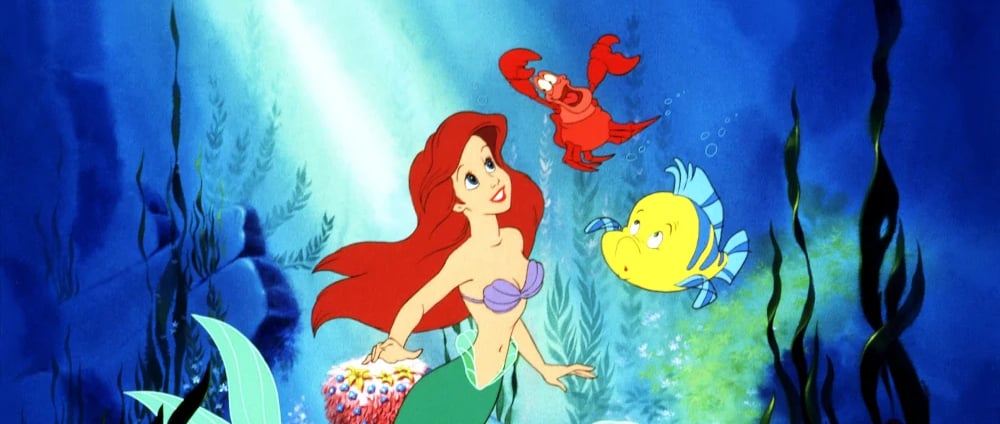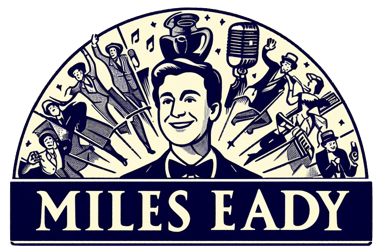The Animated Renaissance: How Disney Revived the Movie Musical (1989–1999)
Disney Brings the Musical Back from the Dead


Previous: The Wobble Years — Risk, Flop and Reinvention in the 1970s–80s →
Next: The Pop Era — Mixtapes, Mashups, and Meta Musicals →
The Animated Renaissance: How Disney Revived the Movie Musical (1989–1999)
Just when the movie musical seemed all but extinct, salvation came from an unlikely source: the animation department.
Between 1989 and 1999, Disney ushered in an era of dazzling, Broadway-style musical films that would shape a generation’s understanding of what a musical could be. These weren’t cartoons with songs — these were full-blown musicals with structure, story arcs, emotional development and singing lobsters.
The Ashman-Menken Formula: Songs as Story
The key player behind this renaissance? Howard Ashman, a Broadway lryicist, who brought with him a deep understanding of song-as-narrative. Working with composer Alan Menken, Ashman brought Broadway smarts to the animation table — and redefined the genre in the process.
“The songs can’t stop the story,” Ashman said. “They have to be the story.”
The Canon: Disney’s Musical Revival
The Little Mermaid (1989)
Ariel sings “Part of Your World” — the quintessential “I Want” song.
This film kickstarts the Renaissance with melody, longing and perfectly placed key changes.
Beauty and the Beast (1991)
The first animated film ever nominated for Best Picture.
Highlights: “Belle,” “Be Our Guest,” “Gaston,” “Something There” — a Broadway structure from start to finish.
Aladdin (1992)
Wordplay, wonder and Robin Williams.
“Friend Like Me” is a vaudevillian showstopper with Busby Berkeley flair.
The Lion King (1994)
Epic, operatic and emotional.
“Circle of Life” and “Be Prepared” combine Shakespearean themes with a musical theatre sensibility.
Watch: “Be Our Guest” – Beauty and the Beast (1991)
A full-blown musical theatre number disguised as dinner. Lumière channels Broadway razzle-dazzle, complete with tap-dancing cutlery and choreographed soufflés.
Why It Worked
Structure: These films followed Broadway templates: opening chorus, “I Want” song, aria, romantic duet, reprise, finale.
Emotion: The songs deepened character, not just decorated the plot.
Animation: Unbound by physics, choreography could go full Berkeley.
Audience Reach: Children embraced it. Adults respected it. Critics took it seriously.
Legacy of the Disney Renaissance
Beauty and the Beast → Broadway musical
The Lion King → The most financially successful stage show in history
Alan Menken’s scores became instant classics
Sparked a wave of animated musicals from other studios
Paved the way for Frozen, Moana and beyond (you're welcome!)
Further Reading
Contemporary Musical Film – Kevin J. Donnelly & Beth Carroll
A look at the musical’s transformation in the 21st century, with chapters on the legacy of the Disney Renaissance.
Buy it hereDestabilising the Hollywood Musical – K. Kessler
Explores the evolution of the musical from classic form to self-aware pastiche. A great resource for understanding how Disney reinvented the genre for new audiences.
Buy it hereDisintegrating the Musical – Arthur Knight
Focuses on African American representation in musical film—brilliant for thinking about which voices the Disney boom left out, and what the wider musical landscape looked like during this time.
Buy it here
Navigate the Series:
Previous: The Wobble Years — Risk, Flop and Reinvention
Next: The Pop Era — Mixtapes, Mashups, and Meta Musicals

